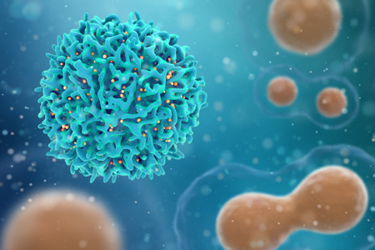Computational Biology's Effect On Solid Tumors

By Erin Harris, Editor-In-Chief, Cell & Gene
Follow Me On Twitter @ErinHarris_1

ArsenalBio is taking different approaches to gene editing, target selection, cell circuit engineering, and computation to reimagine dosing, delivery, persistence, and affordability of cell therapy. The company is focused on integrating technologies such as CRISPR-based genome engineering, scaled and high throughput target identification, synthetic biology, and machine learning to advance a new paradigm to discover and develop in immune cell therapies. I caught up with Ken Drazan, M.D., Co-Founder, Chairman, and CEO at ArsenalBio to learn more about how ArsenalBio explores the use of computational biology to destroy cancer cells in solid tumors.
Explain ArsenalBio.

How is ArsenalBio exploring the use of computational biology for destroying cancer cells in solid tumors?
A data-driven approach to reprogram T cells into cancer medicines is foundational to ArsenalBio. Large-scale screens of thousands of designs are executed to build rich data models that are sufficiently powered. Computational biologist-built machine learning-based pipelines to process data across multiple modalities and started to build predictive models that associate genetic perturbations and design components to the most effective CAR T cells in the treatment of solid tumors.
ArsenalBio has also built a computing infrastructure and data lake to power the high throughput and high dimensional screening capabilities. The data lake integrates metadata from experimental design, raw data from instruments, and processed data from computational and machine learning pipelines. Cloud-based computing infrastructure provides the flexibility and elasticity to process and manage these assets efficiently.
From a sector perspective, what progress has been made in the treatment of solid tumors?
Until recently, CAR and TCR medicines have shown limited evidence of solid tumor control. Fortunately, we’re starting to see a shift in those results, with numerous companies reporting evidence of response. Unfortunately, those responses are still anecdotal, meaning there’s a lot of opportunity to improve our collective strategy with the aim of generating deeper, more durable, and consistent responses.
Explain ArsenalBio’s lead discovery program for ovarian cancer as well as any other current programs.
Our T cell-based medicines are designed to treat solid tumors like ovarian cancer. The development candidate, AB-1015, was derived from numerous component sequences, individually tested and combinatorically optimized. The distinct functions of this DNA template are orchestrated by a proprietary “integrated circuit” designed at ArsenalBio.
A 2019 press release states the company seeks to avoid viral vectors. Explain how and why.
We use our proprietary CRISPR-based non-viral gene delivery method, to bypass the need for viral vectors. Conventional lentiviral and retroviral vectors have numerous limitations, including costly and time-consuming GMP production & QC, untargeted genomic integration that drives variable transgene expression, risks insertional mutagenesis, and limits transgene size and structure (typically ~5-7 kb). CITE uses a DNA template for targeted knock-in to a defined locus, thereby eliminating these challenges: GMP DNA production & QC is faster and less expensive than virus production; targeted insertion into a defined locus enhances consistency of transgene expression and reduces insertional mutagenesis risk; the ability to deliver a cassette up to 11kb allows design of complex synthetic circuits. An underappreciated aspect of direct DNA delivery is that we can utilize the full synthetic biology toolbox because we don’t have to be constrained by the rules of the retroviral life cycle.
ArsenalBio is taking different approaches to gene editing, target selection, cell circuit engineering, and computation to reimagine dosing, delivery, persistence, and affordability of cell. Explain in detail what this means.
ArsenalBio is taking a very modular approach to solving the multiple limitations of cell therapies. To solve issues of affordability, we are developing a non-viral manufacturing process that will yield a shorter vein-to-vein time for our patients and a reduced cost of goods.
As for the cell itself, we have created multiple enhancements to our transgene cassettes that tune down or tune up specific pathways in the T cell to yield increased proliferation, persistence and effector function, which we anticipate will enable greater anti-tumor effect at a given dose. In addition, we are tuning down pathways within the T cell that respond to suppressive elements in the tumor microenvironment, and this should further increase the efficacy of CAR T medicines.
With potency-increasing enhancements, the consequences of off-tumor effects could be increased, and we are therefore using synthetic logic gate sequences to program increased targeting specificity of our medicines. Logic gates also increase the breadth of indications that can be approached, since many do not have single target antigens with sufficient specificity.
In order to select target antigens, we have used a computational approach leveraging bulk RNAseq, single cell transcriptomes, tumor and normal cell proteomes, immunohistochemical reference sets, and topological algorithms to identify such pairings, with candidate targets identified in most solid carcinomas.
What is on the short-term horizon for ArsenalBio?
We look forward to testing our first medicine designed to treat patients with chemotherapy resistant ovarian cancer.
